
Egyptians protest in Tahrir Square, downtown Cairo, Egypt, Tuesday, Dec. 4, 2012. (Photo by Tara Todras-Whitehill/For the New York Times)
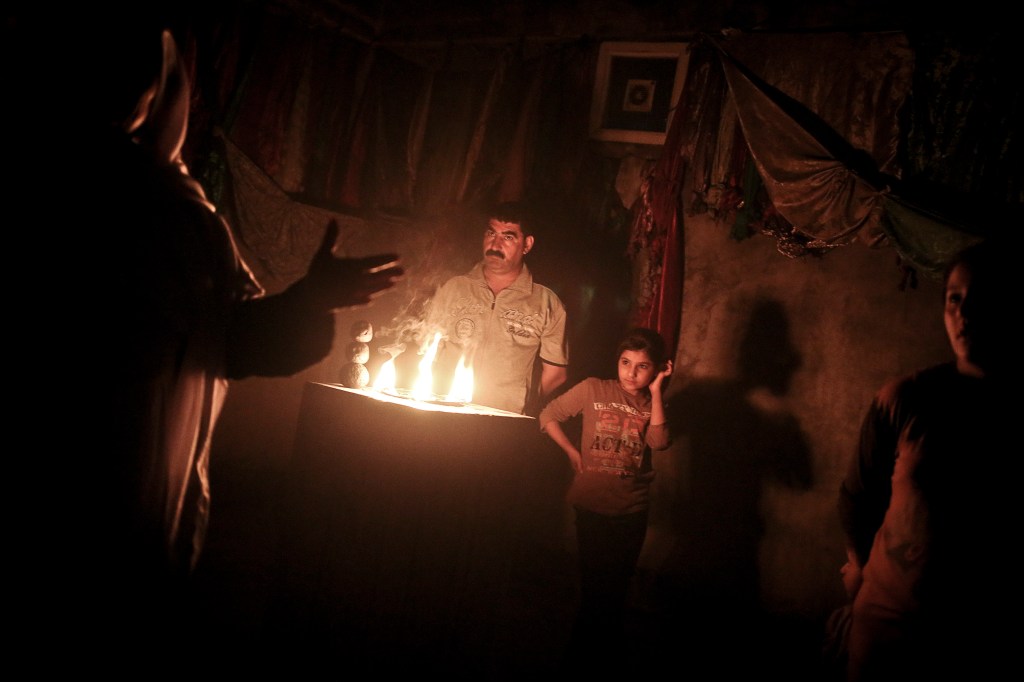
A Yazidi holy man, left, gestures inside a Yazidi temple after a religious candle lighting ceremony, in Sharafadin at the base of Sinjar Mountain, Iraq, Thursday, October 22, 2015. (Photo Credit/Tara Todras-Whitehill for the New York Times)
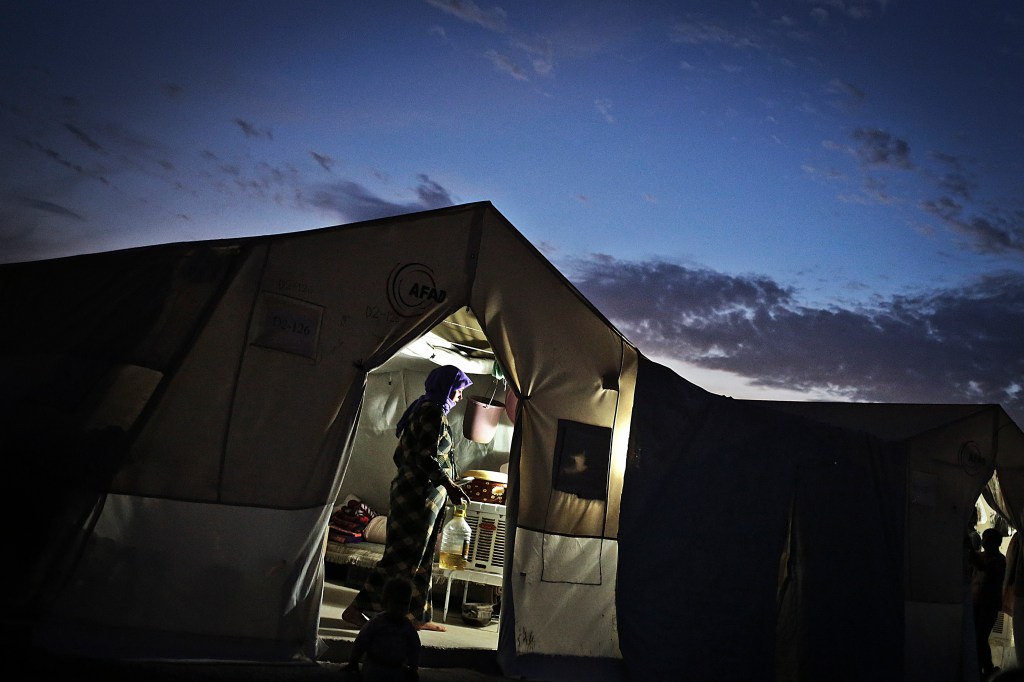
A Yazidi woman cooks dinner after sunset in the Sharia Refugee Camp near Dohuk, Iraq, Tuesday, September 29, 2015. A large number of Yazidis now live in refugee camps near Dohuk after ISIS took over Sinjar mountain in August 2014 and killed thousands of people during that time. (Photo Credit/Tara Todras-Whitehill for the New York Times)

Army helicopters carrying Egyptian flags swing over a press position as people celebrate below following the army announcement that politicians have 48 hours to work out a solution outside the presidential palace in Heliopolis, a neighborhood of Cairo, Egypt, Monday, July 1, 2013. (Photo Credit/Tara Todras-Whitehill for the New York Times)
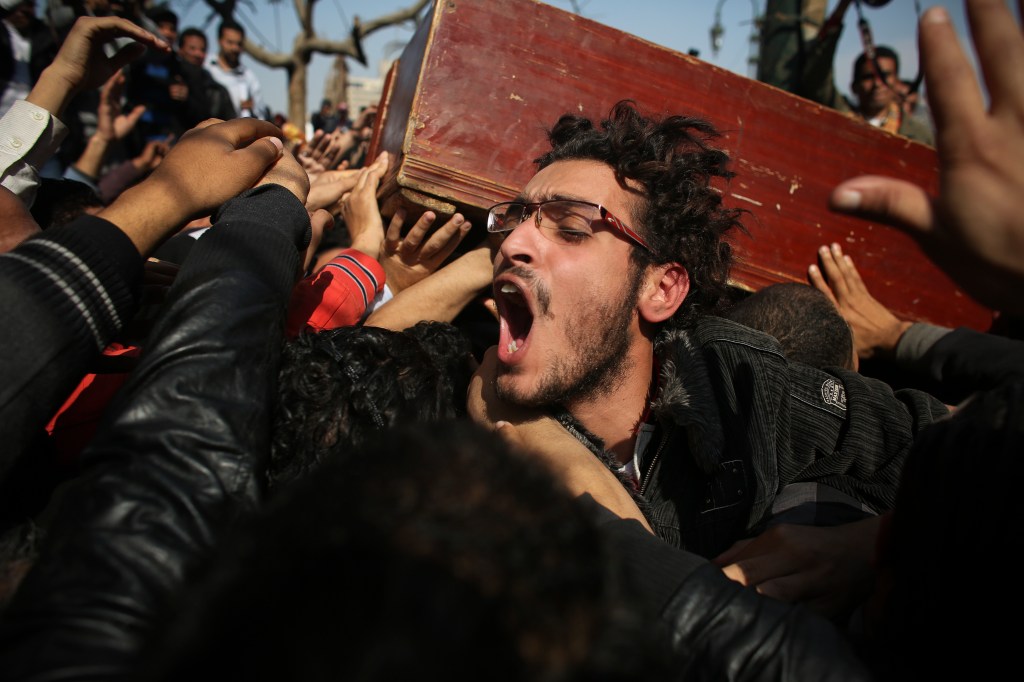
Egyptians mourn during the funerals of Mohammed Guindy and Amr Saad, near Tahrir Square, in Cairo, Egypt, Wednesday, Feb. 4, 2013. Saad died from wounds he sustained during clashes at the palace, and Guindy died after being arrested by police during a demonstration the previous week. (Photo Credit/Tara Todras-Whitehill for the New York Times)
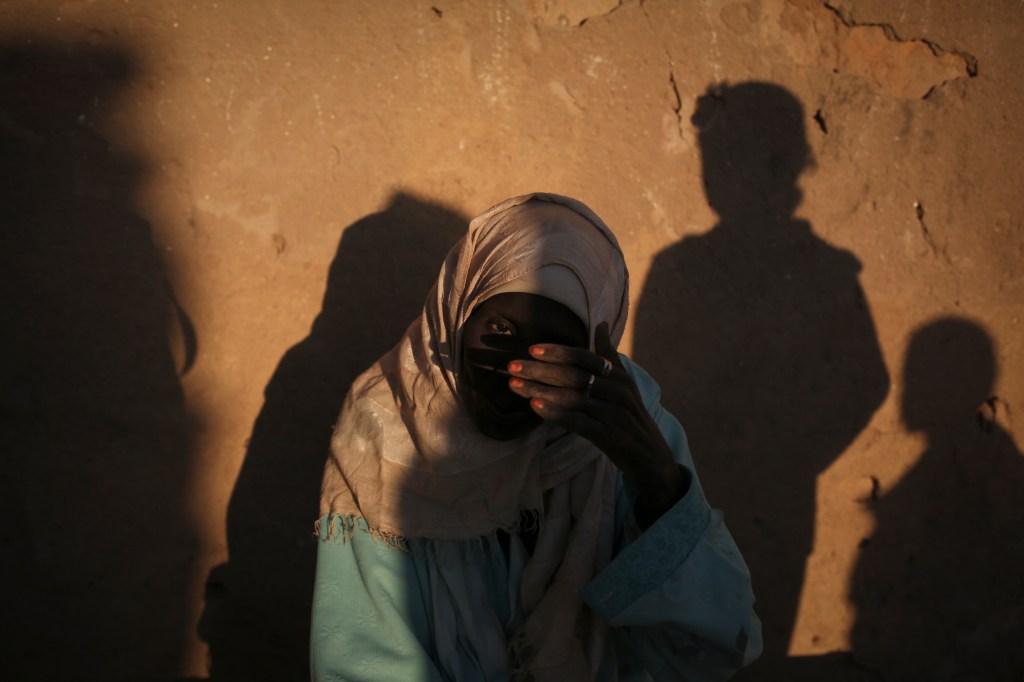
A Nubian woman sits near her house in the resettled village of Toshka, near Aswan, on Tuesday, Dec. 17, 2013. (Photo credit/Tara Todras-Whitehill)
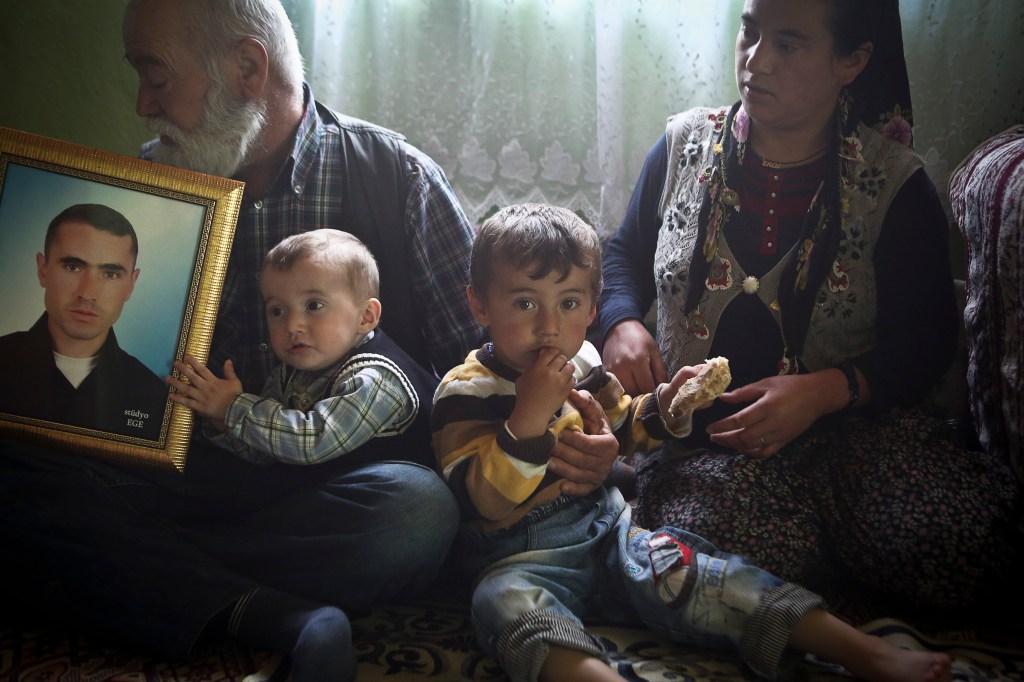
Gulsen Uysal, age 29, right, who lost her husband Erol in the Soma mining disaster a year ago, sits with her children Burak, age 3, center right, and Volkan, age 1, center left, as her father-in-law Ali holds a picture of his dead son, in Elmadere village, outside of Soma, southwest Turkey, Monday, May 11, 2015. Wednesday, May 13, 2015 marked one year since Turkey’s worst mining accident where 301 men lost their lives after an explosion and fire tore through the Soma coal mine. The majority of the men came from small villages in the surrounding areas in western Turkey like the tiny village of Elmadere where 10 miners were killed in the disaster. Many of the miners came from agricultural villages in the region, where the traditional livelihoods of harvesting tobacco and raising livestock have faded in recent years as the governing Justice and Development Party has sought to open up and industrialize the economy. Coal quickly became essential for the growth of the country, producing electricity, jobs and heat for the poor, who were regularly given free bags of coal during election campaigns. The miners that died left behind families, wives and children, that mourn for their loved ones daily. There is also a constant physical reminder of their pain — carved into the side of the mountain of the village is a new coal mine that hasn’t open yet. (Photo Credit/Tara Todras-Whitehill for the New York Times)
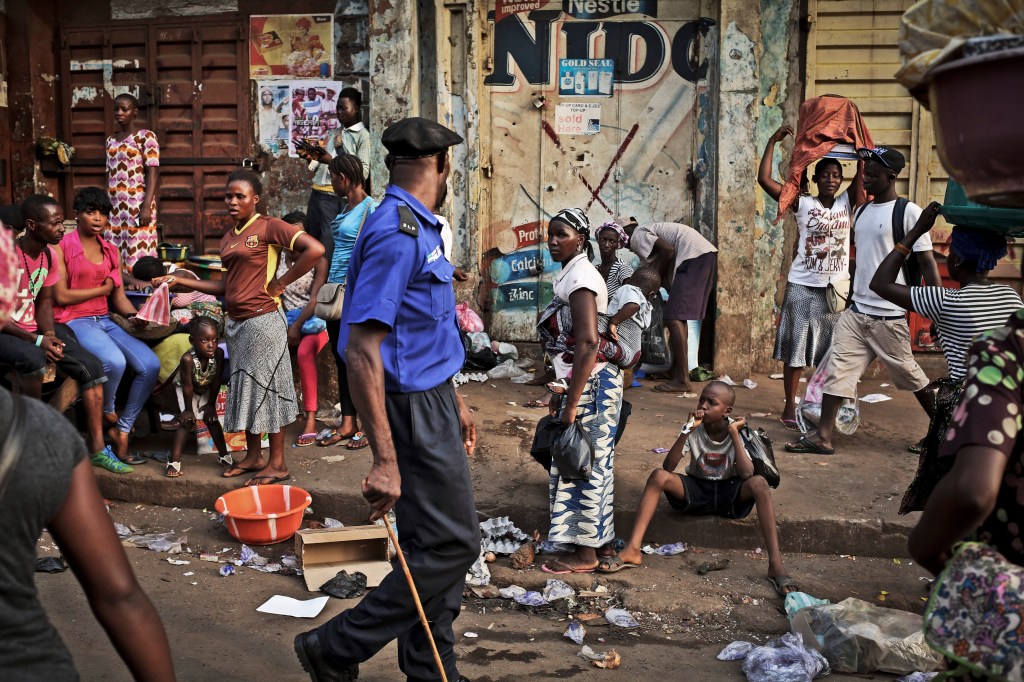
A policeman walks down a street with a stick in order to enforce the closing of shops after curfew near the Eastern Police station in Freetown, Sierra Leone, Saturday, April 18, 2015. Any public gatherings were off limits in Sierra Leone since that July, when a state of emergency was declared to prevent the spread of Ebola. Nearly 10 months later, the Ebola cases are dwindled, but not gone. As the numbers continued to fade, restrictions on the communities started to take its toll. The state of emergency banned any public gatherings, limits buses and taxis and imposed a 6pm curfew on all small businesses. In a country where most commerce is haggled in the street, the local economy felt the pain. (Photo Credit/Tara Todras-Whitehill for the New York Times)
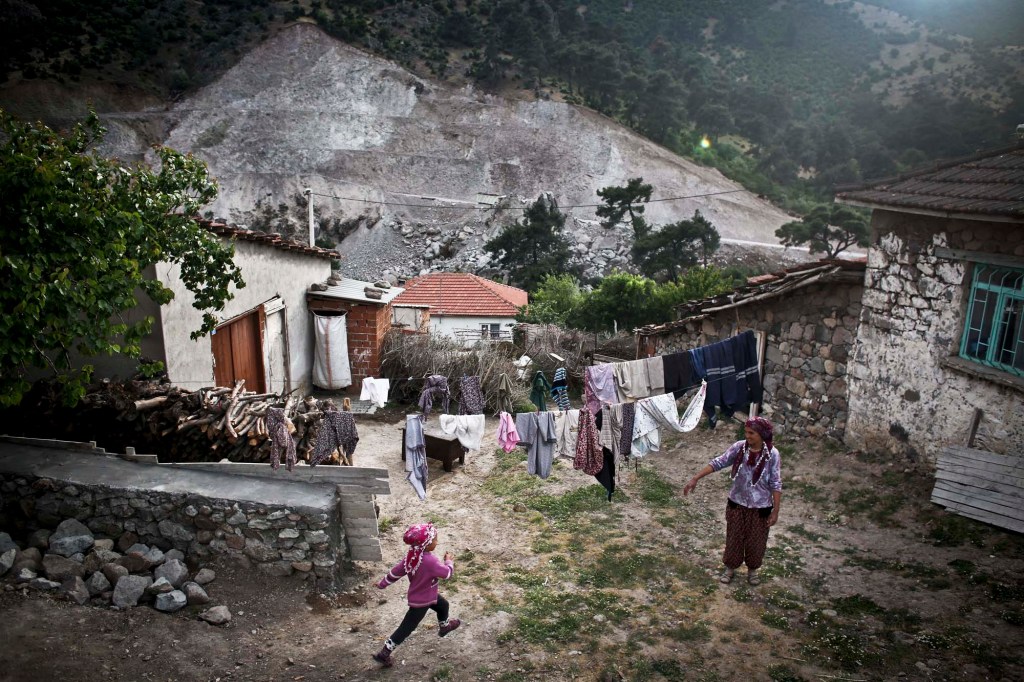
A Turkish woman and her child play in their yard as a new mine that is being built is seen in the background, in Elmadere village, outside of Soma, southwest Turkey, Monday, May 11, 2015. Wednesday, May 13, 2015 marked one year since Turkey’s worst mining accident where 301 men lost their lives after an explosion and fire tore through the Soma coal mine. The majority of the men came from small villages in the surrounding areas in western Turkey like the tiny village of Elmadere where 10 miners were killed in the disaster. Many of the miners came from agricultural villages in the region, where the traditional livelihoods of harvesting tobacco and raising livestock have faded in recent years as the governing Justice and Development Party has sought to open up and industrialize the economy. Coal quickly became essential for the growth of the country, producing electricity, jobs and heat for the poor, who were regularly given free bags of coal during election campaigns. The miners that died left behind families, wives and children, that mourn for their loved ones daily. There is also a constant physical reminder of their pain — carved into the side of the mountain of the village is a new coal mine that hasn’t open yet. (Photo Credit/Tara Todras-Whitehill for the New York Times)
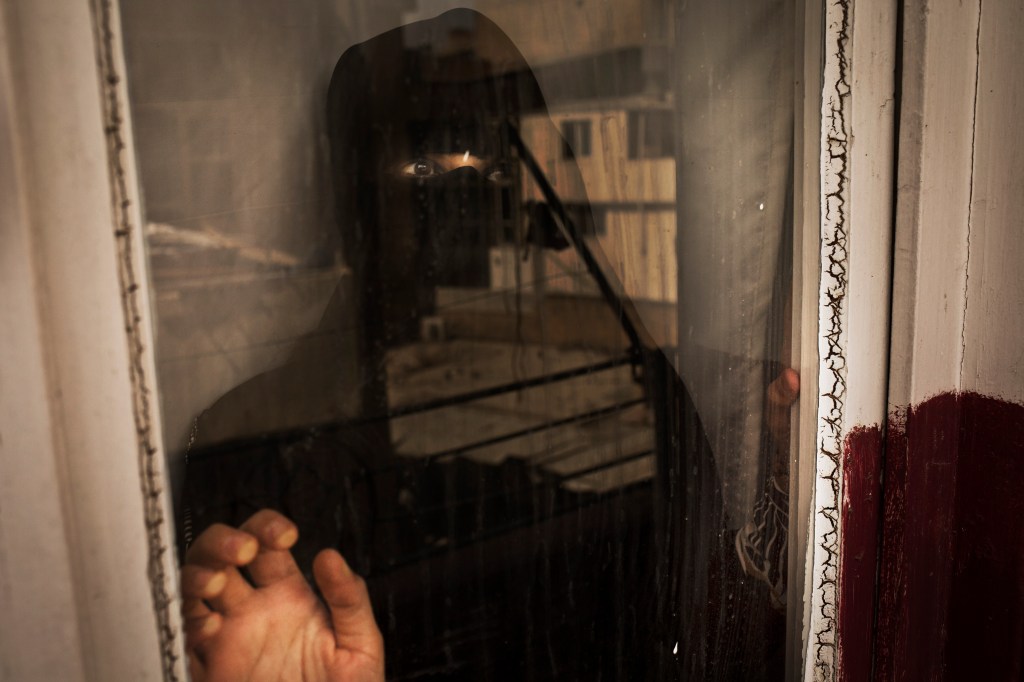
Um Aws, 25, a former resident of al-Raqqa, Syria, who used to be a member of the ISIS al-Khansaa Brigade poses for a photo after an interview with the New York Times, in southern Turkey, Monday, Sept. 21, 2015. Um Aws’ first husband was also in ISIS, and when he died in a suicide operation she was forced to marry another fighter. She and two other women escaped from ISIS, leaving Syria in early 2014. Living in exile in Turkey, they still fear the long arm of ISIS, and only speak to their families sporadically, if at all. (Photo Credit/Tara Todras-Whitehill for the New York Times)
 Tara Todras-Whitehill is a photojournalist, multimedia producer and co-founder of Vignette Interactive, an innovative storytelling company. She is based in Istanbul and has lived in the Middle East region for over a decade.
Tara Todras-Whitehill is a photojournalist, multimedia producer and co-founder of Vignette Interactive, an innovative storytelling company. She is based in Istanbul and has lived in the Middle East region for over a decade.